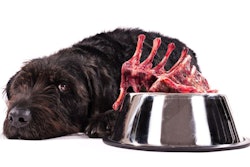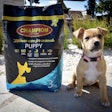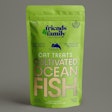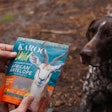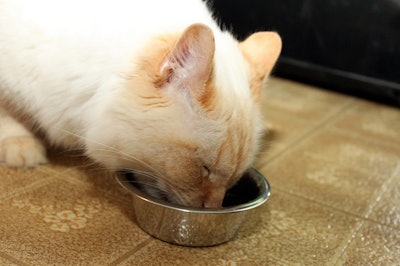
The debate around pet food sustainability often focuses on the ingredients used in dog, cat and other pet foods. Protein sources especially tend to be scrutinized for their effects on ecosystems and societies, since the resource requirements to raise various animals and plants vary widely. In general, being low on the food chain reduces the environmental impact of a protein source, and fungus dwell near the bottom of the food web. Raising fungus as novel pet food ingredients on otherwise discarded material reduces the environmental impact of companion animal nutrition. For example, torula yeast (Cyberlindnera jadinii) feed on woody biomass left as waste or residues from making wood products. Pet food ingredient makers can extract protein from those yeast. Wood waste is abundant, renewable and doesn’t compete with human food crops. The waste wood comes from an industry with strong, existing supply chains that produce large amounts of residue material. Torula yeast has favorable handling and extrusion properties as well. Functional fibers in the yeast may benefit digestive system health. Torula doesn’t contain allergens or heavy metals, while providing amino acids.
For pet food, torula yeast may have an advantage over other novel proteins. Torula yeast is an AAFCO approved ingredient, with a history of safe use. In 2019 feeding trials tested torula yeast in dog food and found the fungal protein source to perform on par with chicken meal. A recent study found evidence that torula yeast may serve well as in cat foods as well.
Torula yeast as novel protein in cat food
Kansas State University researchers compared cat food made with torula yeast to diets using pea protein concentrate, soybean meal and chicken meal. All four cat foods were made using a single-screw extruders under similar processing conditions. The scientists evaluated the cat foods on palatability and digestibility, while collecting data on production parameters. During manufacture, specific mechanical energy of torula yeast and soybean meal were higher than pea protein concentrate. Torula yeast cat food had the largest kibble diameter, piece volume and sectional expansion ratio. Torula has the lowest bulk and piece density. Kibble hardness was lower for torula and soybean meal cat foods compared to the other two diets.
“The torula yeast used in this study facilitated diet formation, increased diet preference, and was highly digestible when fed to cats,” the scientists wrote in the Journal of Animal Science.
In palatability tests, cats chose torula yeast diets a greater number of times than chicken meal, although there was no difference to the other diets. Cats also had a higher intake ratio for torula products than chicken meal and pea protein diets, but not soybean meal.
However, there was no difference in preference between TY and SM. ATTD of dry matter (DM) and organic matter (OM) was greater (P<0.05) for CM (87.43 and 91.34%, respectively) than other treatments. Both DM and OM ATTD of TY were similar (P<0.05) to PP and SM (average of 86.20 and average of 89.76%, respectively). Ash ATTD was greater (P<0.05) for cats fed TY and SM (average of 37.42%), intermediate for PP (32.79%), and lowest for CM (23.97%).
Crude protein digestibility of torula yeast was similar to the other three formulations with an average of 89.97%. However, fat digestibility was lower for torula (92.52%) than other protein sources. Chicken meal had higher apparent gross energy digestibility than torula, but the fungus was similar to the other diets.






